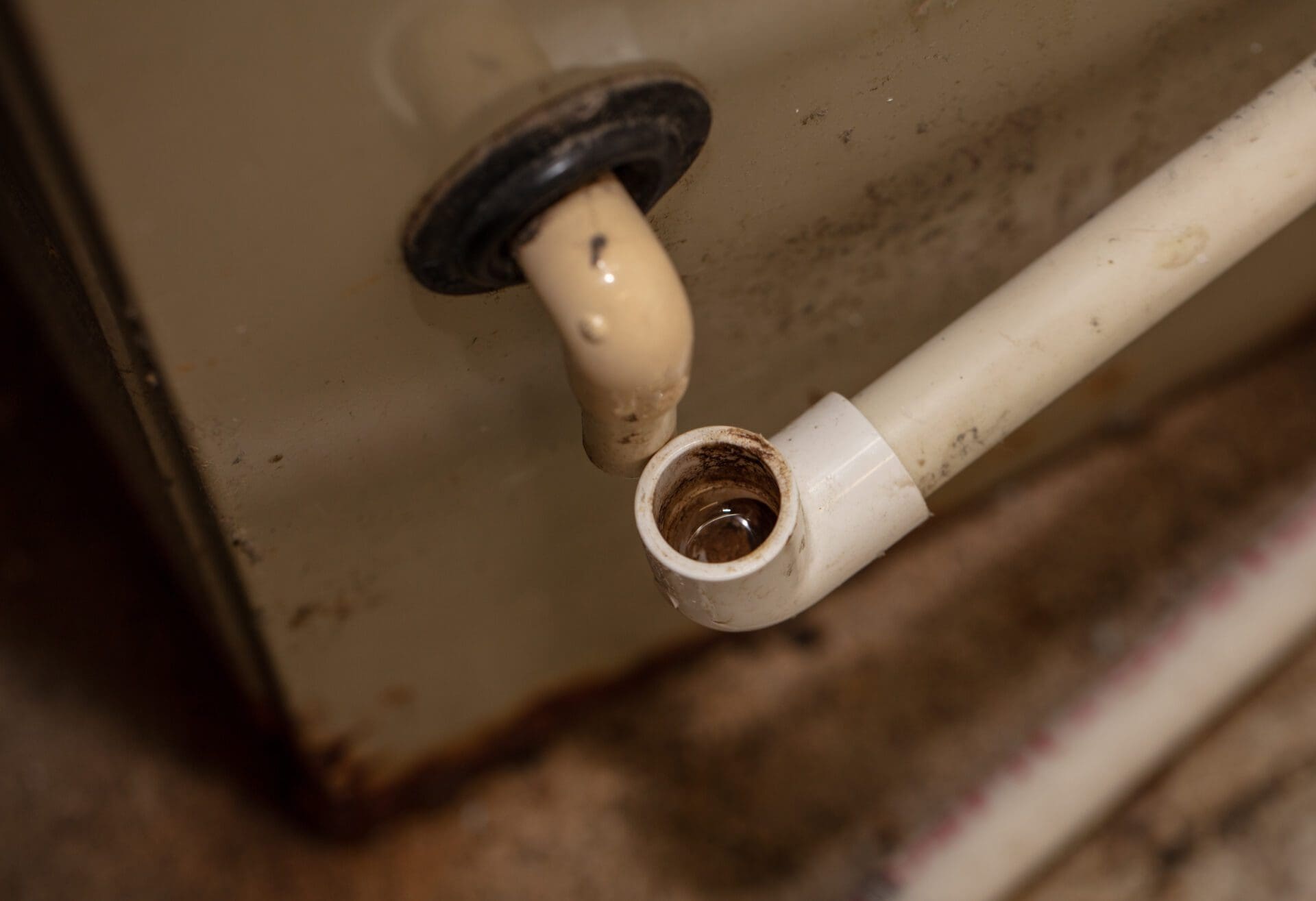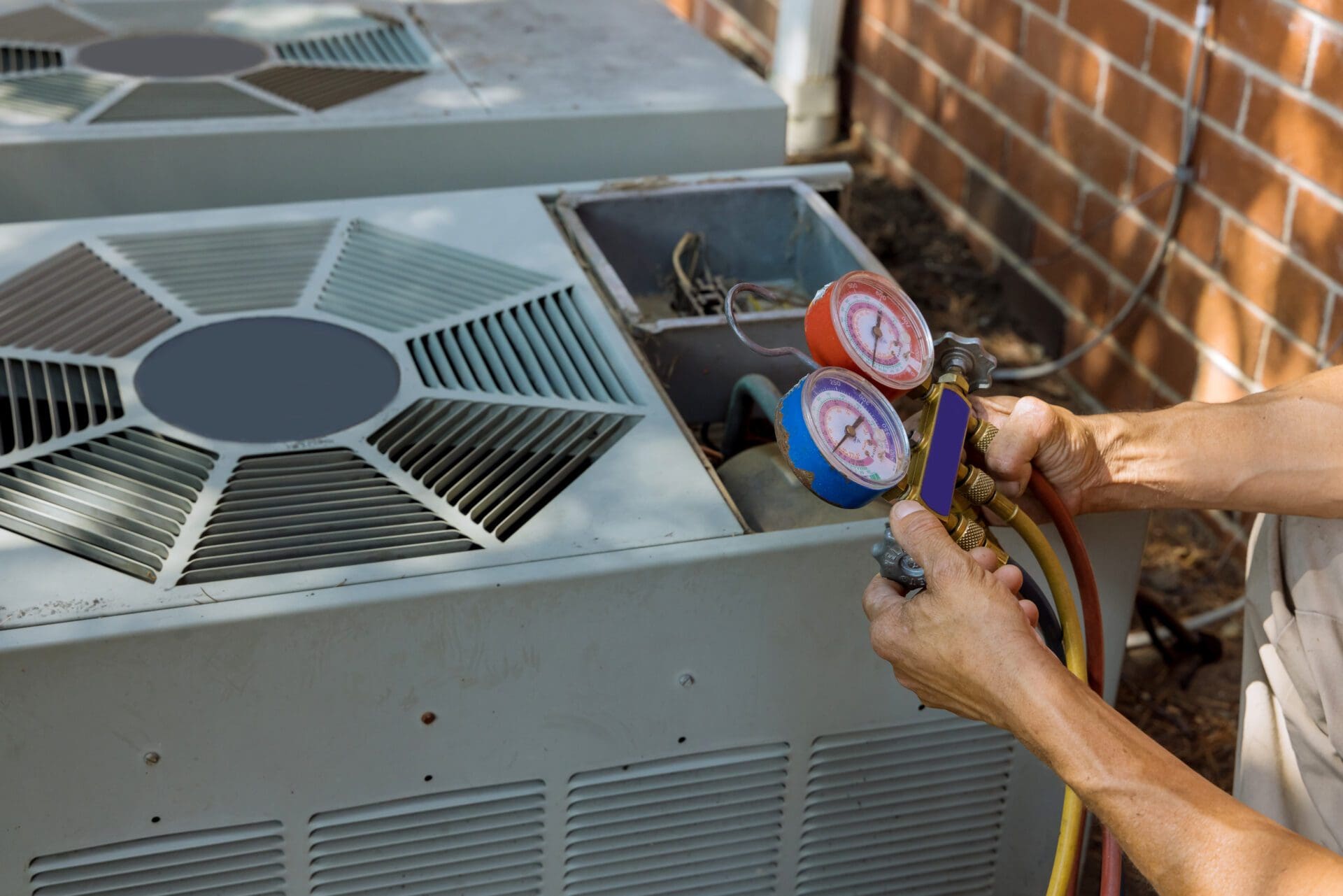
When the seasons change, and the summer temperature rises, we all reach for that same everyday modern luxury: our air conditioning unit. Many intricate pieces comprise air conditioning systems. As a result, most homeowners only learn how an air conditioner works once there’s a problem. However, understanding how your AC unit turns on that coveted cool air can help you prepare and avoid issues like a clogged AC drain line, which can shut down your unit and leave you with mammoth-sized utility bills. Learn what an AC drain line does, common problems that clog pipes, and how to unclog an ac drain line.
Table of Contents
Understanding AC Drain Line Clogs
Before you can understand how to fix or prevent an AC drain line from clogging, you must first understand what an AC line does.
When your air conditioning unit works, it produces water. Your AC drain line funnels water away from your unit to keep the internal mechanisms dry and in proper working order. If your drain is clogged, it can cause water to overflow into your drain pan and trigger your float safety switch, which prevents your unit from cooling your home.
Causes of Clogged AC Drain Lines
Since air conditioning units are stationed outside, wind, dirt, leaves, and rain can batter your unit and lead to clogged drain lines.
Because of this, there’s not one single cause that clogs AC drain lines. While some lines can become clogged due to condensation, they can also clog because of the accumulation of dirt and debris, mold growth, or improper maintenance.
Accumulation of Dirt and Debris
The most common reason why AC drain lines form clogs is the accumulation of dirt. This dirt can come from inside your home from dirty or old filters or because of debris from the outdoors.
Air conditioners tend to collect dirt and dust from their surroundings over time. If you don’t clean your AC unit frequently, the dirt particles and grit can quickly block the drain line.
Growth of Algae and Mold
The accumulation of algae can also cause AC line clogging. When algae or mold settle on the drip pan, it produces a sticky substance that clogs the drain line. It’s easy to overlook the drip pan (and other aspects of your AC unit), but that’s why it’s so important to clean all elements of your AC unit regularly.
If you want to avoid cleaning the drip pan or the AC unit, don’t worry. You can schedule routine AC maintenance with your local HVAC company.
Improper Installation or Maintenance
Sometimes, the problem with a clogged AC drain line is plain old poor installation on the AC unit itself. If a technician installed your unit incorrectly, water can have trouble leaving your drain line, or your drain line may be at an improper angle.
Regardless, if this is the case, you’ll need to have a certified HVAC technician fix the problem.
A lack of maintenance is an equally significant problem. Over time, HVAC systems can have trouble working as years of use can enact severe wear and tear. To keep your AC unit in tip-top shape, schedule regular maintenance.
Routine AC maintenance will keep your system working better for longer and alert you to any incoming problems before they spiral out into something bigger (and more expensive). It also extends your AC unit’s lifespan.
 Signs You May Need to Unclog the AC Drain Line
Signs You May Need to Unclog the AC Drain Line
If you don’t know what a clogged AC drain line looks like, there are a few symptoms you should look out for. Keep an eye out for signs like:
- Water Leakage from AC Unit
- Musty Odor
- AC Unit Won’t Turn On
When you notice these signs, call a trained HVAC technician for assistance.
Preparing for the Unclogging Process
Did you wake up and discover that your drain line is clogged? If you plan to fix the clog on your own, you can use a snake, plunger, or a vacuum. Additionally, you can pour a 1:1 mix of white vinegar and warm water down your drain. Whatever method you use, follow these steps below:
- Turn Off the AC Unit
- Locate the AC Drain Line
- Gather tools and supplies
- Remove the Drain Line Cover
- Clean and Flush the Drain Line
Of course, you can also contact an HVAC team for assistance.
Preventing Future Drain Line Clogs
If you repeatedly observe the condensate pan being filled, it may indicate a clogged AC drain line. There are steps you can take to prevent future drain line clogs. Consider cleaning your AC filters and checking your drain lines on a regular basis.
Clean or Change Your AC filters
One of the single most powerful steps you can take to keep your AC unit healthy is to regularly change its filters.
As the word implies, your AC filter is your first line of defense against debris and is the mechanism responsible for catching and holding dirt, dust, sticks, and any other gunk that tries to pass through into your AC unit and wreck the machine.
Change your AC filters once every six months for the best results.
Check Your AC Drain Pan & Drain Line Regularly
A good way to keep tabs on your AC drain line is to check the drip pan and drain line on a regular basis.
If you notice that the condensate pan is consistently full, it could be a sign of a clogged AC drain line. While using a thin brush to push the clog down the drain line may offer a temporary solution, it’s best to call in a specialist to address the issue if you see regular problems.
Regular Maintenance
Over time, parts wear down, pieces get worn, and your AC unit degrades. Schedule annual AC maintenance (ideally before the start of the summer season) to tighten and clean parts.
Additionally, a certified HVAC technician will be able to see problems before they get too big and save you money alerting you of repairs.
The Bottom Line
Never worry about unclogging your AC drain line again when you call for repairs. If you’re a homeowner who needs AC repair in Bradenton, FL, call Elite today.

